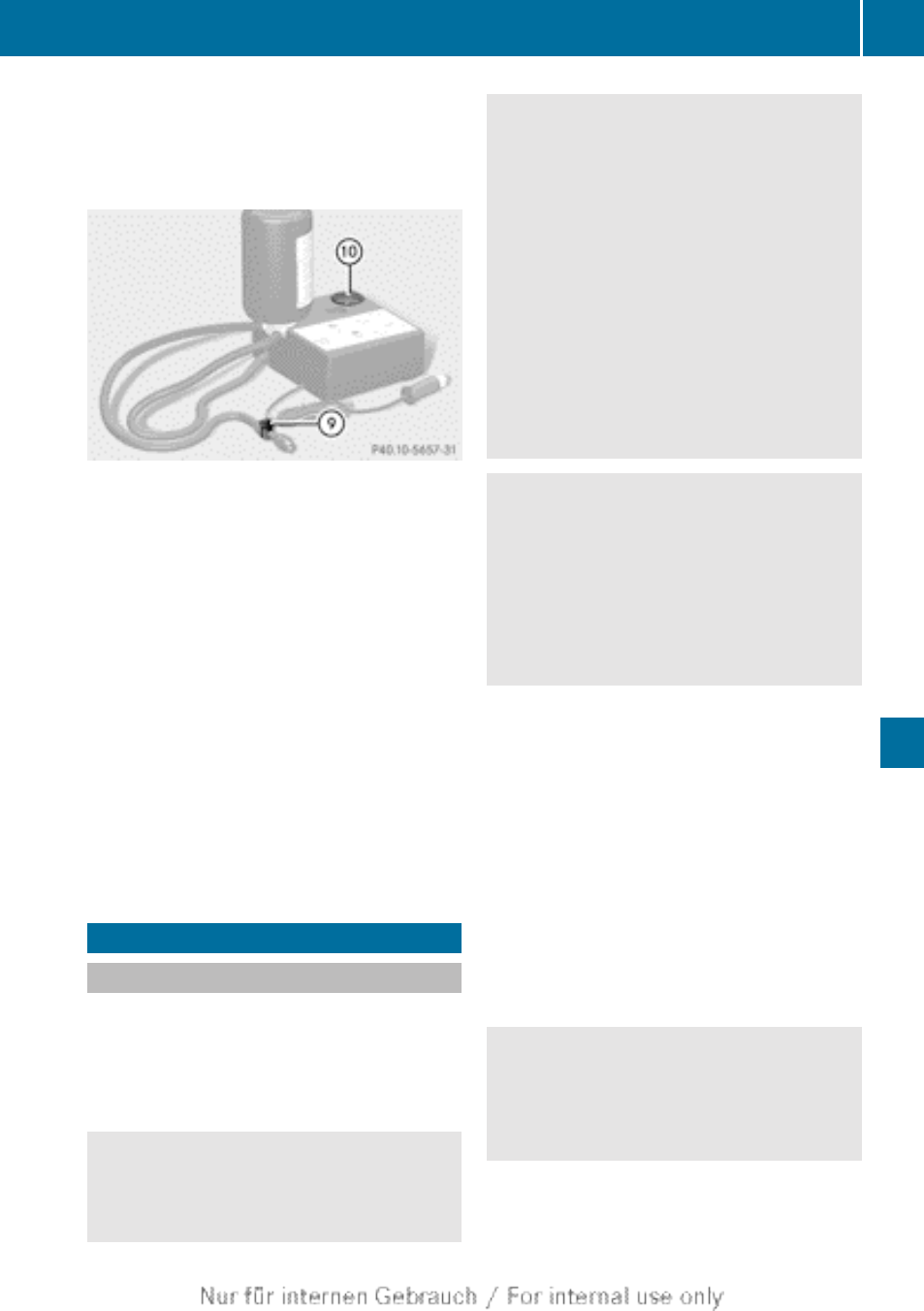Battery (vehicle), Important safety notes, Breakdown assistance – Mercedes-Benz 2013 M Class User Manual
Page 387

placard on the B-pillar on the driver's side
or tire pressure table on the fuel filler flap).
X
To increase the tire pressure: switch on
the tire inflation compressor.
E
Pressure release button
F
Pressure gauge
X
To reduce the tire pressure: press
pressure release button E on the filler
hose.
X
Stow the tire sealant bottle and the tire
inflation compressor.
X
Drive to the nearest qualified specialist
workshop and have the tire changed there.
X
Have the tire sealant bottle replaced as
soon as possible at a qualified specialist
workshop.
X
Have the tire sealant bottle replaced every
four years at a qualified specialist
workshop.
Battery (vehicle)
Important safety notes
Special tools and expert knowledge are
required when working on the battery, e.g.
removal and installing. You should therefore
have all work involving the battery carried out
at a qualified specialist workshop.
G
WARNING
Work carried out incorrectly on the battery
can, for example, lead to a short circuit and
damage your vehicle's electronic system. This
can disrupt driving safety systems such as
ABS (anti-lock braking system) or ESP
®
(Electronic Stability Program).
R
If ABS malfunctions, the wheels can lock
during braking. This limits the steerability
of the vehicle when braking and the braking
distance may increase. There is a risk of
accident.
R
If ESP
®
malfunctions, the vehicle will not be
stabilized if it starts to skid or a wheel starts
to spin. There is a risk of accident.
You should therefore have all work involving
the battery carried out at a qualified specialist
workshop.
G
WARNING
Electrostatic build-up can lead to the creation
of sparks, which could ignite the highly
explosive gases of a battery. There is a risk of
an explosion.
Before handling the battery, touch the vehicle
body to remove any existing electrostatic
build-up.
The highly flammable gas mixture forms when
charging the battery as well as when jump-
starting.
Always make sure that neither you nor the
battery is electrostatically charged. There is
a build-up of electrostatic charge, e.g.:
R
by wearing clothing made from synthetic
fibers
R
due to friction between clothing and seats
R
if you push or pull the battery across the
carpet or other synthetic materials
R
if you wipe the battery with a cloth.
G
WARNING
During the charging process, a battery
produces hydrogen gas. If a short circuit
occurs or sparks are created, the hydrogen
gas can ignite. There is a risk of an explosion.
Battery (vehicle)
385
Breakdown assistance
Z